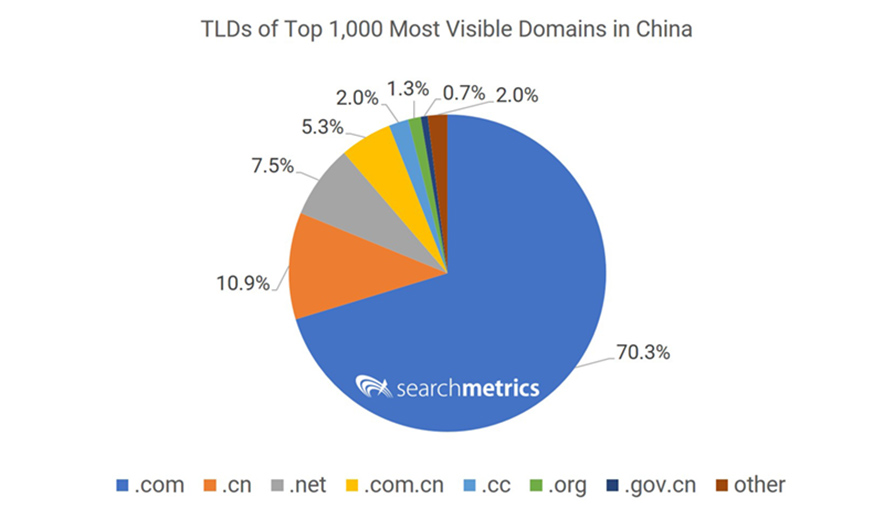Baidu SEO 2020:
Chapter 1: Baidu's Best SEO Practices [2020]
Entering the Chinese market is not easy; you should know these ten things first.
-
1. Avoid Politic & Social Issues
-
In 2018, the Chinese government got angry with Marriott. It lists Taiwan, Tibet, Hong Kong and Macao as separate countries in the survey. For this particular mistake, China took down the site immediately. baidu seo guide
-
Baidu won't crawl your site if you criticize China's sensitive stands on Taiwan, Tibet, Hong Kong and Macao. These sensitive aspects are killing your website if you plan to target and SEO in China.
Exclusive Q&A with Kun Tang, Founder of Jademond Digital, China::
How does Baidu Bear Paw Help Mobile SEO?
Baidu wants a slice of share on the mobile market that is dominated by Wechat and Bytedance. Through Baidu's reciprocal relation with Webmasters, your website is easily optimized with Baidu Bear Paw. Baidu will send more search traffic to your sites. Make sure to check out Jademond Digitals Baidu Bear Paw Insights.
-
2. Know The Competitions
-
It’s worth searching for similar products on Baidu search engines to get a view of what already works. Get the market insight from your Chamber of Commerce in China.
-
3. Content Duplication
-
If you have duplicate content, Baidu is even less tolerant. This content wastes crawl budget and dilutes page equity.
-
The possible reasons for having duplication content:
- • Many URLs for the same page.
- • Having the same language contents for different locales.
-
You must merge and show only one version of your website for Baidu.
- In Baidu’s official "SEO College," they emphasize on how Baidu does not crawl your website if
- • The content is thin or not high quality.
- • The page loads slow.
- • The main body content isn’t prominent.
- • Baiduspider cannot crawl Flash and iFrame websites.
- • Baiduspider cannot able to process many URL parameters.
- • Baiduspider cannot crawl AJAX content and Javascript link.
-
6. Shared Web Hosting
-
The Chinese government is known to crack down censor sites that it finds offensive. If you're sharing a server with one or more of those websites, you're going down as well.
I recommend that you should get a dedicated server where you share it with no one.
-
7. The Great Firewall
-
The Great Firewall blocks western sites like social media, news, streaming apps, blogging websites, etc.
Not all business sites blocked, you can check whether your website is blocked at Comparitech.com.
-
8. Internet Content Provider (ICP License)
-
To get an ICP certificate, you need a physical presence in China. With an ICP license, you can get web hosting and other benefits in China.
What is Chinese SEO?
The definition of Chinese SEO is no different from Google SEO. Both terms focus on optimizing your site for higher ranking in search engine results. Today, Chinese SEO is not about increasing search visibility or ranking.
You have to help the searchers to do his or her tasks. Whatever that is, you have provided an experience while they are surfing on the site.
-
9. Global CDNs For China SEO
-
The Chinese government decided to block a global CDN like EdgeCast in November 2014. Wordpress sites with Edge CDN do not work in China.
With the CDN server, your website can load super fast in China. If you cannot host your site in China, these global CDNs can still help you: Quantil, CDNetworks, and Akamai.
-
10. Domain
-
According to Search Metrics, Baidu doesn’t discriminate sites with .com domains. Websites with .com extension do rank in Baidu. See the chart below.

WeChat Advertising 101: All You Need To Know
In this day and age, WeChat has become an app that is too powerful to live without for anyone in China. With Tencent gradually opening up the platform to advertisers WeChat advertising is becoming a powerful tool for businesses hoping to grow their digital presence in China.
This makes WeChat the most effective and influential Chinese social media for businesses to advertise on. Over 20 million wechat advertising official accounts (a must-have credential for any businesses to place advertisements on WeChat) are registered on WeChat already. If you don’t want your business to fall behind the trend, continue to read this article to find out how to maximize your business’s impact by advertising on WeChat!
4 Reasons Why WeChat Is So Special for Marketers
Launched in 2011 by Tencent, WeChat started off as a basic messaging app. Until now, The app has already amassed over 1 billion MAU and over 45 billion messages are sent through the platform every day. As of the latest report in Q2 2019, WeChat had 1.132 billion monthly active users!
Though it originally started as just a messaging app, the success of WeChat stems from its continuous evolution into what many now call a “Super-App”. As the all-in-one platform that it is right now, the variety of WeChat’s functions branch out to every aspect of a user’s daily life.
Imagine getting all these things done with just a single app: making payments to businesses from street vendors to international luxury brands, settling your credit card bills and utility charges, scheduling a doctor’s appointment, calling a cab… The list goes on.

WeChat even enables its users to access functions from other apps so you can do nearly anything without leaving the app with the addition of WeChat Mini-Programs. And with that, WeChat successfully yields an incredible user stickiness, with each WeChat user on average spending 85.8 minutes and 34% of their mobile data on the app per day.
Each WeChat user browses their WeChat Moments 10 times a day on average and the articles they read each month from WeChat official accounts add up to the length of a full book. All this makes WeChat marketing an incredibly powerful tool for businesses in China. Let’s check out 4 of the main reasons why WeChat is so special below.
#1: The Mind-blowing Purchasing Power of WeChat Users
Apart from the fact that WeChat has a gigantic user base, one will be astonished by the purchasing power all these users carry.
WeChat has achieved a 93% user penetration rate in first tier cities in China. This figure could be very powerful as the majority of WeChat users are between 15 to 40 years old, the group most well-known for having the strongest purchasing power in the country.
But even with the richest population and biggest spenders all captured at the same time, how many of them are actually spending money through the app? In fact, 300 million users have bound their credit/bank cards to WeChat pay and 500 million transactions occur daily on the platform.
So how much is that translated into dollar terms? WeChat alone has driven a total amount of 209.7 billion RMB of information consumption, which accounts for 4.7% of China’s total information consumption. Meanwhile, it also stimulated traditional consumption by 333.9 billion RMB– Just imagine how much your business will miss out on without utilizing the power of this platform!

Key Figures showing the purchasing power behind WeChat
#2: The Capacity to Engage the Right People
Making sure that advertisements posted on social media reach exactly who you want to target are surely among a marketers’ top concerns. That is one of the major advantages you can get from advertising on WeChat.
With the massive amount of data captured and stored by Tencent, WeChat divides its users into granular categories not just by demographic information but by interests and behaviors as well. This enables businesses to filter out the most valuable individuals they want to reach from the over 1 billion users and create WeChat advertisements specifically targeted to this unique group.
Let’s start from one of its most powerful pieces of data, geographic information.
Utilizing LBS technology, Tencent records users’ usual places of residence and current locations precisely to a specific commercial area. Currently, the platform has identified over 4400 commercial areas and over 58 million POI(Points of Interest) in their system for marketers to target. Equipped with this capacity, businesses can target users based on the shopping mall they frequently visited in the last month, or even find out those who are now physically near their store (area with 500 to 5000-meter radius) in order to push advertisements or store coupons just to them.

Store owners can send marketing messages only to those physically near them with WeChat
Recently, WeChat also has started to identify users traveling overseas based on their login location, allowing businesses to target that specific group through advertising. Given how accurate this information is LBS based WeChat advertisements have become some of the most popular forms of advertising on the platform.
The continued momentum of e-commerce growth in China
China is one of the largest e-commerce markets and adopters of digital technologies in the world. In 2013, it overtook the US to emerge as the largest e-commerce market. In FY17, China had over 750 million Internet users and a penetration of nearly 55%. Its online retail market is expected to grow from 17% of total retail sales in 2017 to 25% by 2020. Other Asian markets such as India are on track to follow China’s growth trajectory. china ecommerce market
The Chinese marketplace is quite competitive, with local and international brands contesting for consumer attention and market share. Retails and brands constantly need to innovate to stay in tune with the demands of customers.

China’s e-commerce market is characterised by trends such as mobile-first consumer behaviour, digital payments, and social commerce adoption. These trends can be broadly classified across four main themes or growth waves.
The first theme discusses the adoption of omnichannel technology and the consumer journey between online and offline. The second theme delves into the growth of mobile payments driven by the rise in the usage of mobile phones for online shopping. Further, the third theme highlights the expansion of the digital ecosystem and addition of value-added services by China’s top three e-commerce brands to enhance the existing network. Strategic partnerships between search engines, social media platforms and international players that are building adjacent capabilities are discussed in the fourth theme.
Global companies are focused on tapping the potential of e-commerce ready Asian countries where industry has witnessed similar trends.
How To Enter The Chinese Ecommerce Market
The Chinese E-Commerce Market Is Opening Up To The World
The China e-commerce market is growing steadily year-on-year with its inbound population of 1.418 billion that patronizes local as well as global products from other countries. The e-commerce market is the largest in the world and accounts for more than 40% of the total global e-commerce spending and has projected to reach US$ 1.6 trillion within the next two years. American, European, Australian and Asian companies looking to enter the Chinese market often miss out on details before entering the market that could cost them a fortune.
Here’s What You Need To Know About The Chinese Market
1. How Does Online Retail Work In China

The world of e-commerce in China is vast, thanks to high internet usage that brings a footfall of about 700 million consumers to the e-commerce sphere. Local Chinese e-commerce sites like Alibaba, JD.com, Pinduoduo and the newest one on the block – Xiahongshu. What pushes e-commerce consumption are all-purpose apps like WeChat, that lets consumers shop through the same app that they use to text and book hotels.
2. What Is The Difference Between Chinese And Western Markets?

Now that you have a fair idea about the e-commerce landscape in China, let us burst your bubble about how Chinese consumers shop online as compared to the western world.
Online shoppers, in general, spend more time comparing products, reading product descriptions and checking reviews. Chinese shoppers’ shop from Alibaba, JD.com and Xiahongshu lately. Alibaba represents 80% of e-commerce with its online e-commerce platforms namely Taobao and Tmall.
- Chinese Shoppers
As a C2C platform, Taobao allows customers to buy and sell goods and services among themselves, while the Tmall marketplace mainly focuses on B2C e-commerce and accounts for more than 70,000 domestic and international online retailers.in China. They like receiving their orders within 24 hours and accessing customer service until 10 pm.
- Western Shoppers
Western shoppers are used to shopping from Amazon and eBay. Amazon is a B2B and B2C marketplace. As a B2B marketplace, it functions like any other online selling platform where customers buy products from a variety of choices. The B2C market strategy is what sets it apart from the other western e-commerce platforms. It follows a multi-leveled e-commerce strategy that lets anyone sell anything right from vintage DVDs to used merchandise for fair prices.
- Difference between Alibaba and Amazon’s Business Model
Amazon does not impart data with third-party sellers or brands as it wants to generate revenue and wants its partners to compete for optimal pricing results. Alibaba, on the other hand, shares this data with brands to empower them to make more sales on the Alibaba platform.
3. Mobile Access

The Chinese love instant shopping, thanks to the WeChat revolution. 95% of the Chinese shoppers make purchases from their mobile phones. Mobile e-commerce accounts for 71% of China’s total e-commerce. There is an interesting reason behind their high usage of mobile phones that you can gauge from our previous blog.
4. Easy Payment Options

The Chinese are accustomed to quick payment options with quick service that gradually follows. One of the fastest ways to penetrate the e-commerce market is a combination of quick service and more importantly quick payment options like Alipay and WeChat Pay. The two payment gateway options dominate 92% of the total mobile payment market share. An association with these payment options will result in quick consumption because of the reliability quotient.
5. Build Strong Relationships

‘Establishing strategic partnerships with local support is one of the most successful formulas to enter the Chinese market’ – Ophenia Liang, Co-founder, Digital Crew.
The Chinese believe in Guanxi, which means good relationships. The key is to spread your networking net wide open to local suppliers, logistics partners and business advisors. The connections will help you gather well rounded knowledge about the Chinese e-commerce landscape to reach out to the locals as an authentic entity.
6. Marketing To Chinese Consumers

When you enter a Chinese market, you will have to let go of Facebook, Instagram, twitter, Whatsapp, Google etc. and localise your marketing strategy to adapt to the Chinese market. You will have to set up a local Chinese website, optimise for Chinese search engines like Baidu and use WeChat and Weibo marketing to reach out to your targeted users.
Conclusion
Entering the Chinese e-commerce market will be easier when you have a strong hold over the consumers and build your brand image while keeping Chinese brand guidelines in mind. Some brands have been successful while some have failed because of these minor mistakes. One of the recent examples is Dolce & Gabbana, a successful international brand that lost its hold over the Chinese market simply because they didn’t respect Chinese sentiments.